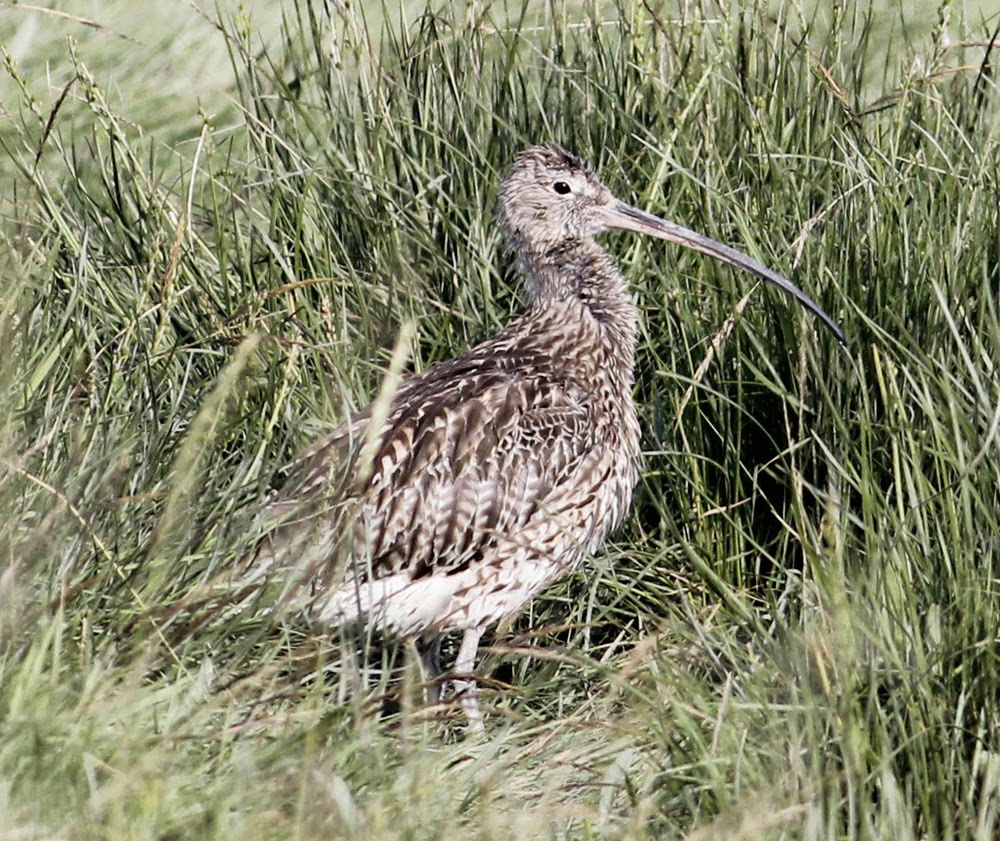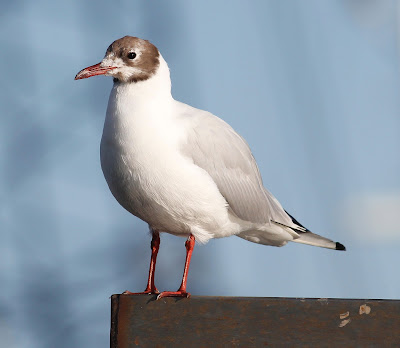The weather people promised us torrential rain for most of Saturday but none arrived. Instead there was 100% cloud all day long combined with almost continuous and very irritating light showers. It was enough to ruin birding ambitions and save the job until the next day.
Sunday at 6am started much the same with the sky failing to brighten until 11 am, a moment in time when Uncle Tom Cobley & All hit the Sunday Streets to signal that a birder’s work is done.
In the meantime there was a Litle Owl at Crimbles again. And at Glasson I thought there may be a Swallow roost nearby because upon arrival at the yacht basin and the dock there were more than 80 Swallows feeding around the two areas of water.
An hour or two later the only Swallows left were the local Swallows and a more normal 12/15 of them. I grabbed a few photos in the murky light with ISO800 again, but hope to take better ones when the sun shines next. High ISOs seem to destroy colour rendition from the images. One of the young Swallows below is especially fresh from a nest, its downy feathers and yellow gape all too obvious.
An hour or two later the only Swallows left were the local Swallows and a more normal 12/15 of them. I grabbed a few photos in the murky light with ISO800 again, but hope to take better ones when the sun shines next. High ISOs seem to destroy colour rendition from the images. One of the young Swallows below is especially fresh from a nest, its downy feathers and yellow gape all too obvious.
Swallow
Swallow
The Common Tern was feeding at Glasson again. It’s the same male which flies off to Conder Green carrying a fish for a female. It’s the male with one tail streamer. A Kingfisher flew across the dock from a boat and landed on a mooring rope but when I walked around to look for the bird it had gone elsewhere.
Otherwise things were pretty much normal, with a short walk revealing 5 Tufted Duck, 2 Cormorant, 2 Pied Wagtail, 1 Grey Wagtail and 1 Great Crested Grebe.
Waders and herons at Conder Green: 130 Redshank, 26 Lapwing, 12 Oystercatcher, 10 Common Sandpiper, 4 Curlew, 2 Greenshank, 1 Snipe, 6 Little Egret, 3 Grey Heron. A Peregrine showed all too briefly as it flew over the marsh before disappearing behind trees to the east; I’m sure it will be back to finish off the job.
Wildfowl: 2 Wigeon, 2 Little Grebe, 6 Shelduck.
Two Pied Wagtails here as well as a Grey Wagtail near the bridge where there’s a good stand of reeds and where I spotted 2 Sedge Warbler, 2 Reed Bunting and 1 Reed Warbler. There was a Meadow Pipit still in song over the marsh as it has done all week now.
On the way home a Buzzard circled over Head Dyke Lane, and then over a neighbour’s house a gliding Sparrowhawk heading west towards the river.
If the weather people are to be believed there’s sun for birding next week, We’ll see.













































































